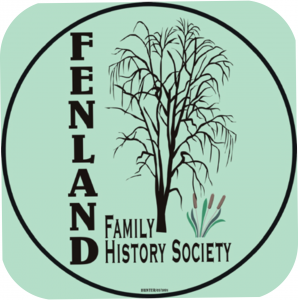We were delighted when one of our local genealogists came to our meeting with a presentation about apprenticeship records. This is one of the courses taught professionally by Richard who is a member of AGRA (The Association of Genealogists and Researchers in Archives).
The aim of the evening was to show the resources available and where to find them; and understand what they tell us and how they help in family history.
An apprenticeship indenture was a legal document whereby a master, in exchange for a sum of money (the Premium) agreed to instruct the apprentice in his or her trade for a set term of years. The life of an apprentice was completely dependent on the master and the provision of food, clothing and lodging was generally part of the agreement.
Although it may have depended upon the trade, and the parties involved, the amount of the Premium varied and was agreed between the parties. Some apprentices (i.e. actually, the apprentice’s family) had to pay the master a substantial sum to take on the apprentice.
Apprenticeship generated a range of records, many of which can provide invaluable information for tracing family history.
The apprenticeship agreement between an apprentice and a master had rules and obligations on both sides. The expectations on apprentices and their masters were legally binding and were laid out in a document, known as an indenture, that stipulated the reciprocal duties. Usually, during their training, there were rules banning the apprentices from marrying, gambling or visiting public houses! For his side of the bargain, the master was supposed to look after the apprentice to a sufficient standard (in living arrangements and quality of training), but there are tales of mistreatment, and apprentices running away. Also, from the Poor Law, a master had to take an apprentice if offered or they could be fined. As this would incur costs for upkeep, if the apprentice was unwanted this could lead to bad feeling and master and apprentice disputes.
Many young boys (and some girls) were taken into apprenticeship to learn a trade. The practice of apprenticing young men to learn a trade is first recorded in twelfth and thirteenth century London. It gradually spread to many other towns and cities. As it spread it became subject to regulation and (hopefully) it is through the recording of these agreements that records may be found. Sometimes records did not exist if the agreements were informal (especially if the trade was passed on within a family).
The Statute of Apprentices of 1563 (sometimes called the Statute of Artificers) stated that no one could set up a trade without completing an apprenticeship, and that all tradesmen served an apprenticeship of at least seven years before they could trade.
The poorer children that were apprenticed could be referred to as pauper apprenticeships, and provision for this apprenticeship could be made under the Poor Laws. The Poor Relief Act of 1601 (Old Poor Law) allowed the parish officials to bind a child to a master. Parish overseers could bind children as young as six or seven to serve as apprentices until they were adults. As ever with local authorities and spending, such bindings were supposed to ensure that children were taken care of at little cost to the parish (such as in cases of illegitimacy). Places to look for records can be Vestry Minute records, charity records and the Overseer of the Poor minutes. These indentures were not subject to stamp duty unlike trade apprenticeships.
In 1709, The Stamp Act put a tax on indenture and apprenticeships became more centrally recorded (unless pauper as above).
Many children were sent miles away from home to work as cheap factory labour, or menial, low paid labour (even if they did get board and lodging). Removal of pauper children from workhouses in cities to work as apprentices in rural mills in the North of England was commonplace.
An Act of Parliament in 1801 required the keeping of an apprenticeship register, although not many survive.
With the advent of the New Poor Law in 1834, responsibility for pauper children was placed in the hands of the newly established Poor Law Unions. The system of compulsory apprenticeship came to an end in 1844.
Richard had a Wisbech example to take us through the process: the Aldiss/Aldis/Alders family.
Finding the apprenticeship had given details that allowed him to work out the timeline, and also follow the changing of spelling.
In the Q&A following, some members had been apprentices and recalled their indentures. Although there were recollections of low pay during the apprenticeship, and no board or lodging included in modern times, at least the rules on going to the pub had also been dropped 😊
NB indenture referred to the cut made on the document which had the contract written out in duplicate (occasionally triplicate) on the same sheet which was then separated with a wavy cut (indentured – like teeth). You could tell which pieces fit back together as each cut was unique.
There is no set standard of how the indenture is laid out, so they can differ widely in format and information. However, you should be able to find out names, trades, status of master, parents (although pauper indentures do not usually have the names of the parents), term of apprenticeship, signatures, witnesses.
Borough records may have detailed abstracts.
Where to find indentures:
Borough or City Registers
Parish Registers of Apprentices
Poor Law Union records
Stamp Duty records
Guild Records (of craft guilds) and lists of Freemen
Poll Books
Chantry Records
Quarter Sessions (for disputes)
Newspapers
Settlement Examinations (being an apprentice gave you settlement rights in an area)
Both Ancestry and FindMyPast have collections of records related to apprenticeships.
